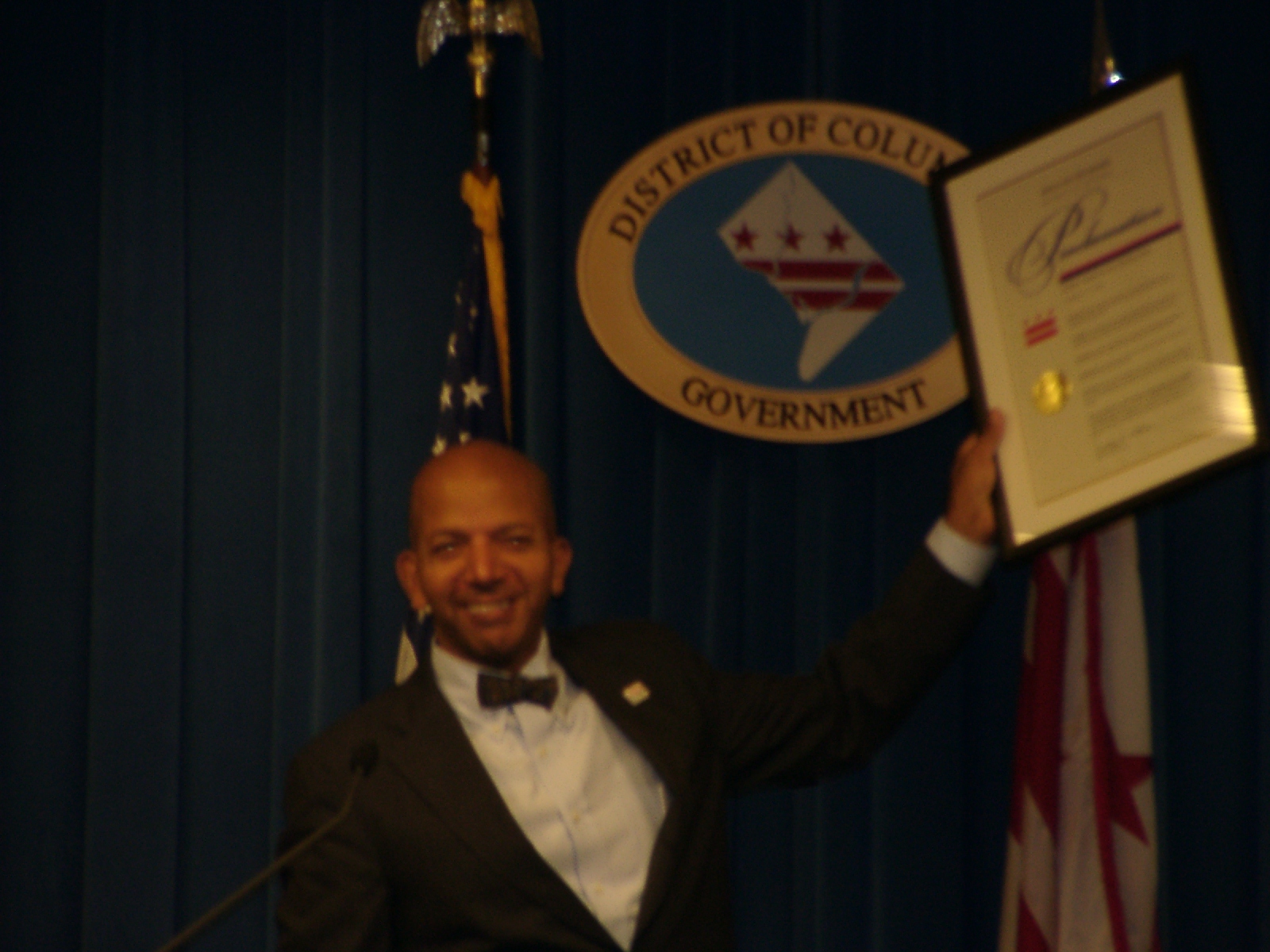|
|
|
DC Mayor Anthony Williams declares Journey through the Universe Week in the District in 2004. Each year, from 2000 to 2005, the program engaged all 6th grade students, their teachers, and their families, with professional development workshops on a customized space science curriculum, 40-50 scientists and engineers from 15 metro area research organizations visiting 7,000+ 6th graders in over 100 schools—one classroom at a time, and family & public programs at the National Air and Space Museum and sites across the city. |
The National Center for Earth and Space Science Education has a 25-year heritage of science education programs at the local and national levels. Partners include the Smithsonian Institution, NASA, the Arthur C. Clarke Foundation, the Carnegie Institution of Washington, the Johns Hopkins University Applied Physics Laboratory, the American Association for the Advancement of Science, and community organizations across the nation. Engaging and effective programming has immersed hundreds of thousands of students, teachers, and parents in the nature of science and what we know about our world and what lies beyond.
The Center is committed to ensuring that all its science education and public outreach initiatives truly reflect the research experience, and are accurate in both scientific content and process. To best serve this need the Center maintains an in-house space science research group. Staff researchers split their time between research and national education and public outreach.
The Center has a Cooperative Research Agreement in Planetary Astronomy with the Solar System Exploration Division at NASA’s Goddard Space Flight Center. Center researchers are on teams that design, build, and use ultra-high resolution infrared spectrometers mated to some of the largest telescopes on Earth to study the composition, temperature structure, and global winds in the atmospheres of other planets. These efforts support current, recent, and anticipated NASA planetary flight missions.
History—Evolution of an Organization
1989-1996 Smithsonian’s National Air and Space Museum
Under the direction of the Laboratory for Astrophysics at the Smithsonian’s National Air and Space Museum, Family Science Night, Journey through the Universe (then Window on the Universe), and the Voyage National Program started out as Washington, DC, metro-area programs, and served as pilot initiatives for national replication. In 1993, Family Science Night (then known as Learning is a Family Experience, or LiFE) won the Smithsonian Exhibition Award for best school program. Over eight years, Lab staff also served as science advisors for such IMAX® films as Blue Planet and Cosmic Voyage, conducted extensive docent training and professional development workshops for teachers, visited thousands of students in classrooms, and served on many exhibition development teams.
1996-2005 Challenger Center for Space Science Education
In 1996, the Lab’s educational programming, grants, contracts, and staff were transferred to Challenger Center for Space Science Education under Challenger Center’s newly created Space Science Education and Research (SSER) department. At Challenger Center, the Voyage exhibition on the National Mall became a reality (2001), the MESSENGER Educator Fellowship Program was born (2003), and Journey through the Universe became a national initiative specifically for under-served communities, engaging 197,000 grade K-12 students. SSER’s staff of space science researchers, educators, and instructional designers provided ongoing content support for Challenger Center’s network of 50 Learning Centers, developed extensive grade K-12 lesson packages, and conducted electronic field trips for students across the nation.
2005-2007 Universities Space Research Association
In 2005, the SSER department at Challenger Center, and all its education and space science research activities were fully transferred to Universities Space Research Association (USRA) as the newly established National Center for Earth and Space Science Education. While at USRA, the Voyage National Program was rolled out.
2007-present National Center for Earth and Space Science Education
In 2007 the Center separated from USRA to operate as a mature, stand-alone institution, with business operations provided by the Tides Center. During this time, the Voyage exhibition was permanently installed in Houston, Corpus Christi, and Kansas City, and approved for installation at 3 other sites; workshops by the MESSENGER Fellows had passed the 15,000 teachers trained mark, live Web 2.0 coverage from mission control for the NASA MESSENGER spacecraft flyby of Mercury in September 2009 had hundreds of classrooms following along, Blog on the Universe was launched, and Family Science Night passed the 50,000 attendance mark.

